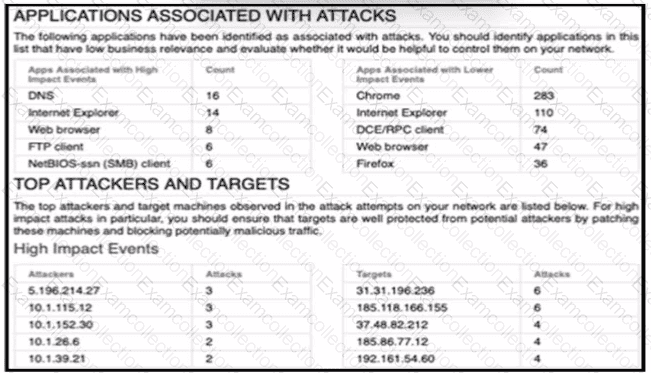Cisco 300-710 - Securing Networks with Cisco Firepower (300-710 SNCF)
Which two deployment types support high availability? (Choose two.)
An administrator is attempting to remotely log into a switch in the data centre using SSH and is unable to connect. How does the administrator confirm that traffic is reaching the firewall?

A security engineer must improve security in an organization and is producing a risk mitigation strategy to present to management for approval. Which action must the security engineer take based on this Attacks Risk Report?
An engineer is configuring a second Cisco FMC as a standby device but is unable to register with the active unit. What is causing this issue?
Which firewall design will allow It to forward traffic at layers 2 and 3 for the same subnet?
A security engineer manages a firewall console and an endpoint console and finds it challenging and the consuming to review events and modify blocking of specific files in both consoles. Which action must the engineer take to streamline this process?
A network engineer implements a new Cisco Firepower device on the network to take advantage of its intrusion detection functionality. There is a requirement to analyze the traffic going across the device, alert on any malicious traffic, and appear as a bump in the wire How should this be implemented?
A network administrator is trying to configure an access rule to allow access to a specific banking site over HTTPS. Which method must the administrator use to meet the requirement?
What is the disadvantage of setting up a site-to-site VPN in a clustered-units environment?
An organization is setting up two new Cisco FTD devices to replace their current firewalls and cannot have any network downtime During the setup process, the synchronization between the two devices is failing What action is needed to resolve this issue?



